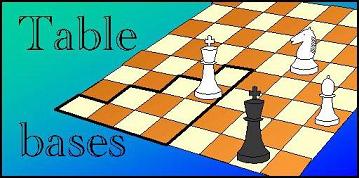6-Men Slices and 5-Men sub-slices
If we keep only one (white) piece of a 7-men TB static, a 6-men slice results. Such a slice contains 64^6 = 64G positions, as the static piece in general breaks all symmetry. Even at 1 bit/position this takes 8GB, and several such bitmaps would be needed. This exceeds our target for memory usage. If one of the dynamic white pieces is a King, however, the slice can be treated in a streaming way, as King moves have a high degree of locality. If we treat the slice (white) King square by King square, raster-scanning the board, the sub-slice of the slice where the King is somewhere around b2 are no longer needed by the time we have the King moving around g7. In fact, they have not been needed for a long time. We can thus start writing back the chunks which with we started long before we start loading the final chunks of the slice. This way the slice never needs to be in memory at once, it just streams through it.

Fig. 2 - One set of very local King moves

